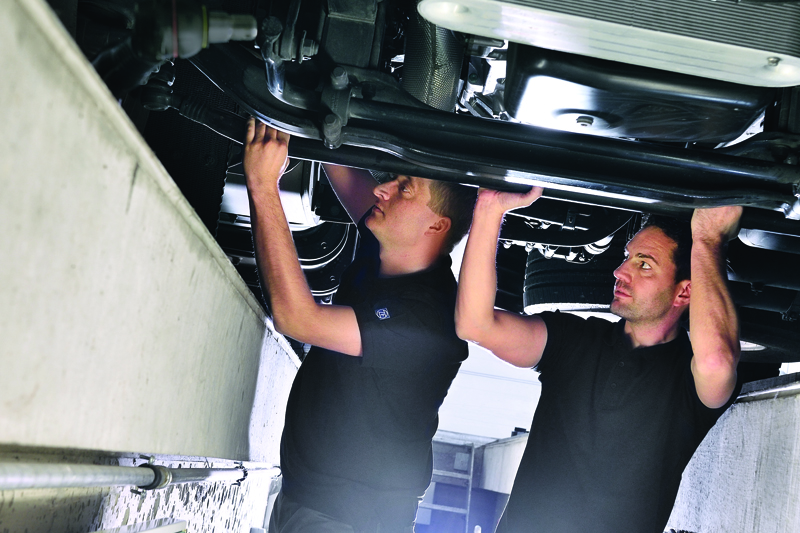
ZF offers some best practice advice for technicians in relation to undertaking vehicle axle, steering and suspension checks in preparation for winter.
When it comes to running a commercial vehicle in the winter months, rain, ice and snow as well as the subsequent salt and grit can all cause damage to vehicles and accelerate normal wear and tear. Winter weather conditions put added pressure on steering and suspension components and even minor defects can quickly escalate into a more significant problem.
Axles, steering and suspension in particular can be damaged by a host of issues which typically manifest during the cold season, compromising both vehicle handling and safety. Ian Gaskell, Product Support Technician at ZF Services UK, outlines the typical issues that affect steering and suspension during the winter season, and highlights why vehicle checks and inspections are essential for both commercial vehicle operators and workshops.
“When foreign matter enters components, in the best case scenario it will lead to a rattling noise in the chassis, but if the ball joints are affected, handling and control of the vehicle may quickly become unstable.
Importance of reminding customers about inspection
Cold weather conditions place increased demands on the handling of commercial vehicles, and even the smallest issues, such as hitting a pothole or navigating traffic calming measures, can have a lasting impact and vehicle handling can deteriorate. If the damage is initially identified by the technician, the components can be repaired, however due to the bad condition of roads in winter, damage can escalate more quickly. For this reason, educating customers about the issues to look out for is vital, as is reiterating that some damage that may not be considered dangerous in better driving conditions can be magnified when the roads are wet and icy.
Don’t ignore abnormal handling or sounds
For drivers, abnormal handling and unusual noises are usually the biggest indicators of faults in the chassis components. This can have a direct impact on stopping distance, cornering behaviour and the effectiveness of the anti-lock braking. But it’s not always suspension that is the problem. Other components such as the ball joints on the tie rods or rubber to metal components in the suspension systems are also subjected to natural wear. Since many components that are at risk of damage are contained in sealed units, some signs of wear can be difficult to identify until removed from the vehicle and inspected.
Natural wear can be accelerated by winter conditions
While winter conditions can damage the road, causing cracks and potholes, it’s salt and grit that can cause the most damage to a commercial vehicle. When foreign matter enters components, in the best case scenario it will lead to a rattling noise in the chassis, but if the ball joints are affected, handling and control of the vehicle may quickly become unstable. Depending on how damaged the joint is, the affected connection point can even fracture, causing severe vehicle instability or breakdown, leading to expensive recovery, vehicle downtime and unwanted repair costs.
Always replace in pairs
When damage to safety critical components does occur, replacing in axle pairs is essential to maintain stability and safe handling. It is vital workshops communicate this message as imperative, rather than it being an unnecessary add-on. Inevitably, the performance of a newly-replaced component compared to a worn one can be considerably different, adversely affecting the braking distance and handling. Any variation between a new and used parts will manifest itself during manoeuvring.
Education can avoid expensive repairs down the line
Reminding customers about the importance of a steering and suspension service before the winter months is vital, so any potential issues can be identified before the vehicle’s traction and safety is compromised. Early repairs to steering and suspension components can also negate the likelihood of expensive repairs later, especially as winter driving conditions can speed up wear, and in some cases can see some components irreparable.
It’s also beneficial to remind customers to get their suspension system inspected straight away following a bump or knock, no matter how big or small, as any problem can become an unsafe issue if left unresolved.
When replacing components, choose parts from reputable aftermarket providers such as ZF Services’ Sachs and LemfÖrder product brands. This helps provide customers with the peace of mind they’re equipped with high-quality chassis components before the onset of winter.








